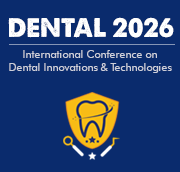Dental Implantology
Dental implantology is defined as a branch of dentistry that utilizes dental implants to restore missing or damaged teeth. It is a relatively new field, having been developed during the mid-20th century. Dental implants are small, anatomically shaped posts that are surgically placed in the jaw to act as an artificial tooth root. Once the implant is integrated with the jawbone, a restoration such as a dental crown, bridge, or denture can be attached to the implant to replace the missing or damaged tooth. Though the process of placing a dental implant can sound daunting, it is surprisingly simple and straightforward. During the treatment, a dental implant post is surgically implanted into the jawbone and allowed to heal and integrate with the jawbone for several weeks. After it has healed, the implant is ready for a restoration to be attached to it. This restoration is usually a dental crown, bridge, partial denture, or full denture, depending on the number of teeth being replaced. In addition to traditional dental implant placement, other treatments are available in implant dentistry as well. Bone grafting can be used to increase the bone density in the area where the implant is to be placed. Sinus lifts can be performed to increase the amount of bone in the maxillary sinus area when upper dentures or dental bridges are to be placed. In certain situations, guided tissue regeneration can be used to help ensure a successful integration of the implant into the jawbone. The benefits of dental implantology are numerous. Dental implants help restore a person’s bite, allowing them to chew and eat more comfortably. They also aid in the preservation of teeth and jawbone integrity and reduce the risk of further bone and tooth loss. Additionally, dental implants look and feel natural when compared to other artificial tooth replacement options, making them a preferred choice for many patients. Overall, dental implantology is an excellent way to restore missing, damaged, or disfigured teeth and improve the health of your teeth and gums. If you're considering dental implant placement, it is important to understand the process and the benefits and risks of the procedure.

David Geoffrey Gillam
Queen Mary University of London, United Kingdom
Zvi Loewy
New York Medical College, United States
Khamis A Hassan
Global Dental Research Centre, Canada
Laurindo Moacir Sassi
Erasto Gaertner Hospital Cancer Center and Mackenzie Evangelical University Hospital, Brazil
Arnaldo Castellucci
Dr. Castellucci MD, DDS, Italy
Yasser Khaled
Marquette University, United States



Title : Efficacy of a biomin F toothpaste compared to conventional toothpastes in remineralisation and dentine hypersensitivity: An overview
David Geoffrey Gillam, Queen Mary University of London, United Kingdom
Title : Knowledge and attitudes of dental professionals in the evaluation of Molar Incisor Hypomineralisation (MIH): Awareness, diagnosis and treatment approaches: An overview
David Geoffrey Gillam, Queen Mary University of London, United Kingdom
Title : The coordinated triad of spatial temporal and biomechanical strategies managing the where when and how of shrinkage stress in bulk fill resin composite restorations
Khamis A Hassan, Global Dental Research Centre, Canada
Title : Dental treatment of 1500 young children under general anesthesia
Jaap Boehmer, Rijnstate Hospital, Netherlands
Title : Enhancing root canal success strategic use of orifice opener one step synthesis gels orifice barriers
Emmanuel Samson, Consultant Total Dental Care, India
Title : Dealing with peri implantitis: An insight to various treatment regimens
Preetinder Singh, Academy of Oral Surgery, United States